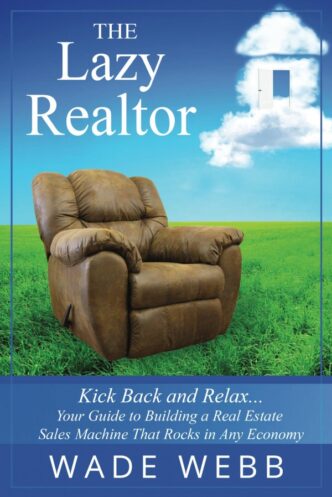
There are many different closing techniques in sales, which are certain steps salespeople take to persuade the customer to make the necessary commitment. Closing should be easy and natural. Before the close you should probe with questions to uncover their challenges and fears to know what solutions you can offer. Here are some of the classic and best sales closes to take your skills to another level.
List of the Best Sales Closes in Real Estate
- Affordable Close. Ensure people can afford what you are selling: “We’ve talked about the cost-benefit ratio, so let’s go ahead with the paperwork..”
- 1-2-3 Close. Close with the principle of three: “It comes in green, red, or black; which one would you like?”
- Alternative Choice Close. Offer a limited set of choices: “Would you like the stand-alone model or the built-in system?”
- Assumptive Close. Act as if the client is ready to decide: “I take it we can go ahead now?”
- Balance-Sheet Close. Add up the pros and the cons: “We’ve weighed the pros and cons, and this will definitely improve your bottom line—when do you want it installed?”
- Best-Time Close. Emphasize that now is the best time to buy: “This is an excellent time to use this system, so let’s get started with the paperwork.”
- Bonus Close. Offer an incentive to clinch the deal: “And if you purchase today, you also get the additional guarantee; here are the forms.”
- Middle Close. Make three offers—with the target in the middle: “We’ve got three choices—the larger one is most likely too much for your needs, and the smaller one doesn’t give you everything you asked for; the middle one, however, is exactly the right solution, so let’s go ahead with the paperwork.”
- Calendar Close. Put it in the diary: “Okay we can get this installed early next week.”
- Companion Close. Sell to the person with the client: “I know you’ve been paying close attention to the conversation; if you agree this is the right solution we can get the paperwork started today.”
- Compliment Close. Flatter the client into submission: “I like the way you think and this seems the best solution for your needs; let’s get the paperwork handled.”
- Concession Close. Give the client a concession in exchange for the close: “I really think this will work best for you, and we can reduce the delivery cost by 20 percent by putting the order in today.”
- Conditional Close. Link closure to resolving objections: “It looks like we resolved all the issues you talked about; shall we get the paperwork handled now?”
- Demonstration Close. Show the client the goods: “I’d like to show you how this works and then if you like it, we can go ahead with the agreement.”
- Economic Close. Help the client pay less for your product or service: “I think if we put this order through today, we can still get the discounted rate.”
- Emotion Close. Trigger identified emotions: “Sounds like this is something that will really help everyone feel more secure. Let’s go ahead with the paperwork.”
- Golden Bridge Close. Make the only option attractive: “Everyone who has this system agrees with your analysis; it’s the best on the market. All we have to do is complete this form.”
- Humor Close. Relax the client with humor: “I think you’ve come up with more benefits for the product than I have. Shall we go ahead and complete the paperwork?”
- Hurry Close. Go fast to stop the client from thinking too much: “Looks like we’ve covered everything you need; all we have to do now is decide on delivery dates.”
- No-Hassle Close. Make it as easy as possible: “We’ve done the hard part—making the decision; now all we have to do is complete the paperwork.”
- Now-or-Never Close. Hurry things up: “We only have a few more in stock, so let’s get the paperwork started.”
- Ownership Close. Act as if the client owns what you are selling: “When you take delivery, you’ll wonder how you survived without it.”
- Quality Close. Sell on quality, not on price: “Everyone who has purchased this system says it’s the very best on the market.”
- Repetition Close. Repeat a closing action several times: “To summarize, you’ve agreed on the style, the size, and the color, so let’s handle the paperwork.”
- Retrial Close. Go back to square one: “I know you said you’re first objective was productivity and we agreed it will increase by up to 250 percent with this product, so let’s set some key installation dates.”
- Selective-Deafness Close. Respond only to what youwant to hear: “From what I hear you saying, you want this delivered as soon as possible; how does next week sound?”
- Standing-Room-Only Close. Show how others are queuing up to buy: “It’s been a real winner so let’s get you on the delivery schedule as soon as possible.”
- Summary Close. Describe all the extras the client is going to receive: “With this you will also receive guarantees, warranties, and free installation; here’s the agreement we need to complete.”
- Testimonial Close. Use a happy customer to convince the new customer: “You can talk to anyone in the industry and they’ll tell you it’s amazing. The only question left is deciding on a delivery date.”
- Trial Close. See if the client is ready for a close:. “If we can guarantee all the figures we discussed, are you ready to go ahead today?”
- Ultimatum Close. Show negative consequences of not buying: “I’d hate to see you miss this opportunity; shall we just get the agreement covered?”
- Yes-Set Close. Get the client saying “yes” and the client will keep saying “yes”: “I know you said yes to the benefits and yes to the solution; all we need now is a yes on the terms.”
As you can see, the list of closing techniques is almost endless, and all it really takes is for you to ask for the order. Go into the call expecting to close on something. Commit the client to do something, to take some action.
There’s a saying that you sell on the tangibles and you close on the intangibles. In other words, when it comes to the close, if you have helped the customers feel they can trust you, if you have asked the right questions, then the only way to go is to buy from you. So use the oldies and goodies in terms of closing techniques and then remember when you sell from your heart, you are not really closing the sale, you are opening an amazing solution for your client.
Strength and Courage,
Wade
Please pass this post on using the social options below...



